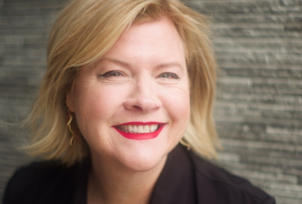JURY PRESIDENT

MANDY WALKER
Mandy walker is an Australian cinematographer, now living in the USA. One of the few female DPs working on big-budget feature films today. An accredited member of the American ASC and Australian ACS associations. Inducted into the ACS Hall of fame. A former Governor for AMPAS, and sitting Governor of the ASC. She is a recipient of an Honorary Doctorate from the Australian film school, AFTRS, and has been awarded The Member of the Order of Australia Medal. She apprenticed as a camera assistant on several documentaries, music videos, and feature films before shooting her first feature film, Return Home (1990). Mandy Walker received praise from the industry and public attention with Parklands (1996), The Well (1997) and Lantana (2001) but in her professional portfolio one can find many more unforgettable productions, among others Australian Rules (2002), Shattered Glass (2003), Australia (2008), Tracks (2013), Hidden Figures (2016), Mulan (2020) or the most recent one by Baz Luhrmann, Elvis(2022). Which she was an Oscar and BAFTA nominee , winner of the Australian Academy of Cinema and TV Award for best cinematography, winner of the ASC award for best cinematography and winner of the ACS award for best cinematography and Cinematographer of the year.
She is currently in post production on Marc Webb’s live action Snow White for Disney. Next to the feature films, she is renowned for her long career in commercials. She filmed for brands such as Nike, Audi, Mercedes, Louis Vuitton, and most notably,again with Baz Luhrmann the famous advertising spots for Chanel No5, featuring Nicole Kidman and Giselle Bundchen.
What appealed to you about being a judge in the FilmLight Colour Awards?
I really appreciate the artistry of great colourists and how they help the cinematographer enhance the storytelling with colour, contrast, light and darkness – creating atmosphere and focusing the audiences’ gaze to what’s important in the frame.
What are you looking for in entries?
I will be looking for consistency and colour that is not too “affected” or overly treated, but seamlessly works with and not against the elements of the story and what’s seen in the frames e.g. lighting, art direction, costume and make up.
Can you describe your collaborative process with colourists? How do you work together to achieve the desired aesthetic?
I always include colourists as early as possible when I’m working on the visual language of a movie. I’ll also set up and test LUTs with them that work with the elements of the other departments and to explore the way the colour, lightness and dark can work with texture, reflective elements and lensing.
What makes a good colourist, in your opinion?
I like working with someone who is an artist, understands the aesthetic of my vision and is able to collaborate on creating new looks that suit the movie – rather than someone who works on a movie with the same ‘go-to’ style.
Can you tell us about your relationship with colour? Has this changed at all over the course of your career?
I think I have always been sensitive to colour, the emotions colour can enhance and the images it can create when used with light, dark, focus, distortion and layering.
How does colour grading enhance storytelling in film and television? Can you provide an example from your own work where colour played a crucial role in conveying the narrative/emotion?
Throughout our work on ‘Elvis’, we consciously used different LUTs that worked with the lighting and other elements such as art direction and costume to express the transitions of colour and contrast. We also worked with different lenses to help the audience relate to the time periods. The ‘40s were based on certain low contrast and pastel colours of still photography of the time. The ‘50s/’60s Kodachrome period of the Hollywood movies and the rich colours of Vegas for the ‘70s.
Have advancements in colour grading technology impacted your work as a cinematographer, and if so – how?
Yes they have. I feel that the advent of the DI has made our job easier and more flexible. To be able to play and test ideas in pre- and post- production is exciting and fun. Also the grading tools have changed, been made faster and are more easily manipulated. When we shot with film and did a chemical analogue grade, we were more limited by the film stock, processing and the adjustments of colour and density only in the final prints.
What trends do you foresee in the future of colour grading? How do you think these trends will influence the way stories are told visually?
I think imagery is always evolving, as storytelling is. I don’t feel going super extreme is what interests me, but I appreciate more the subtlety and artistry of the person running these machines and software to enhance the visual language.
And finally, what are you working on now/what’s next for you?
I am currently shooting additional photography on a live action film I shot, ‘Snow White’. Looking forward to what’s next!
